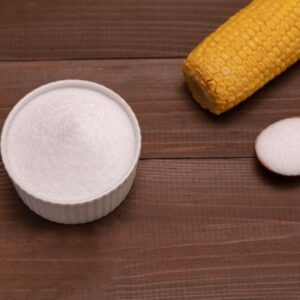
Wartime Coffee Substitute Fights Diabetes and Arthritis
Dear Living Well Daily Reader,
Many folks (myself included) can’t think of anything worse than a morning without coffee.
And as we’ve mentioned here in Living Well Daily many times, coffee isn’t just the best part of your morning — it’s also jampacked with powerful compounds that can thwart off ailments like cancer, Alzheimer’s and heart issues. So there is good reason to drink it besides for the pick-me-up.
But there’s another morning brew that could boost your health and even protect you from diabetes and arthritis…
It’s a powerful root that’s been used as a coffee replacement and additive for centuries and is now being recognized for its potent health-boosting powers.
![]() Smart Substitution
Smart Substitution
It’s called chicory, the root of a blue flowering plant, and it’s been making its way into America’s coffee cups since the 1800s.

Left: chicory root Right: chicory flowers
You see, when the city of New Orleans was under siege during the American Civil War, coffee supplies dwindled to near nothing. However, inventive locals stretched out their coffee supplies by adding roasted chicory root.
While it lacks caffeine, chicory root is cheap and tasty and makes a great addition to coffee. So even after the supply lines were reopened, citizens of New Orleans kept chicory in their coffee. In fact, chicory coffee is still available in many New Orleans restaurants.
But what folks didn’t realize at the time, adding this earthy root to their coffee wasn’t just padding the supply. It was also boosting their health.
In more recent years, chicory root has been the subject of many health studies. It’s been shown to reduce inflammation, delay or prevent the onset of diabetes, and even help folks’ arthritis.
In one study, folks who took chicory root extract saw improved A1c levels, which is an indicator of diabetes. In addition, researchers found that chicory also significantly improved adiponectin levels. Adiponectin is a protein that’s involved in regulating glucose levels. Both of these findings indicated that enjoying chicory regularly could thwart the development and/or onset of diabetes.
Another study found that chicory root also improves arthritis symptoms. A clinical trial done by the Rheumatic Diseases Division at the University of Texas Southwestern Medical Center’s Department of Internal Medicine shows that chicory root may also be able to combat the painful symptoms of arthritis.
When people aged 50 or older who had osteoarthritis of the hip or knee took chicory, some showed a 20 percent improvement in pain and stiffness. This means chicory root might help reduce the pain and stiffness caused by arthritis.
Perhaps of all these incredible abilities, reducing inflammation is the key to chicory’s powers, since it’s full of plant polyphenols that can stomp out inflammation and curtail its effects on the body. This is so important because inflammation is considered the gateway to many chronic diseases.
Chicory is easy to get. You can look for it in health food store or online retailer websites. In addition, there are a few coffee makers that offer coffee and chicory blends. The most popular is Cafe Du Monde, and their coffees are available through their website, CafeDuMonde.com
Live well,

Natalie Moore
Managing editor, Living Well Daily
Sources
[1] 13 Health Benefits of Coffee, Based on Science
[2] The History of the Chicory Coffee Mix That New Orleans Made Its Own
Written By Natalie Moore
Natalie Moore is a dedicated health researcher with a passion for finding healthy, natural, and science-based solutions. After a decade of direct healthcare experience in western and natural medicine, she was involved in public health research before joining Living Well Daily.
View More Free Articles
This Sleep Mistake Is Doubling Your Disease Risk
Think your inconsistent bedtime is just a harmless habit? Think again. New research reveals that going to bed at different times each night isn’t just making you tired—it could be dramatically increasing your risk of serious diseases. But the key to making sure poor sleep doesn’t derail your health goals likely isn’t what you think…....
Stop Obsessing Over Diet Trends
Can we stop with the endless diet debates already? Every other week there’s a new headline shouting about which diet is best for weight loss, heart health, or diabetes. Paleo, keto, low-carb, high-protein… it’s exhausting. And now, a new meta-analysis is out comparing the Mediterranean diet, the DASH diet, and something called AHEI (that’s “Alternative...
A New Reason to Ditch Processed Junk
If you’ve ever walked the inside aisles of your local grocery store and thought, “This is all just junk,” your instincts were spot on. A new study published in the journal Thorax just added another red flag to the list of dangers linked to ultra-processed food—a 41 percent higher risk of lung cancer. That’s right....
When Being Winded on Stairs Is Serious (And When It Isn’t)
I had an athlete visit me recently because he experienced shortness of breath while climbing stairs. He is in great shape, so he was worried about what it might mean. “Doc,” he said, “I run five miles three times a week. Why am I huffing and puffing after two flights of stairs?” His concern is...
Study EXPOSES Hidden Danger Lurking in Your Car
We think of our homes and cars as safe havens. But according to a startling new study, they may be flooding your lungs with microscopic plastic particles—every single day. Researchers in France recently found that adults inhale an average of 68,000 microplastic particles daily from indoor air alone. To put that in perspective, that’s about...
Mailbag: Is Modern Food Making You Snore?
“What can cause snoring, and is there a way to correct this issue?” —Seeking Silence Hi Seeking, Snoring happens when the soft tissues in your throat relax and vibrate as air passes through during sleep. While several factors can cause snoring—from sleep position to nasal congestion—I want to share one trigger that might surprise you....
Simple Food Swap SLASHES Dementia Risk 28%
Let’s be honest… who would jump at the chance to cut their dementia risk by 28 percent. And no, you don’t need to run marathons, survive on broccoli, or learn to play the zither (whatever that is) to make it happen. All it takes is one easy swap—something that’s probably already in your refrigerator. Researchers...
This SMART Floss Exposes Hidden Health Danger
Scientists have created dental floss that doesn’t just clean between your teeth—it also tracks your stress while you’re flossing. Now, I know what you’re thinking… “Great—now even flossing is going to stress me out by telling me how stressed I am.” But this fascinating new tool from Tufts University could be a game-changer for understanding...
Is This "Safe" Sweetener Damaging Your Brain?
The headlines are alarming… “Popular Sugar Substitute Linked to Brain Cell Damage” and “Erythritol Could Damage Critical Brain Barrier” are just two of the dozens I’ve spotted recently. But before you toss every sugar-free product in your pantry, let’s take a closer look at what this study actually shows—and what it doesn’t. The latest research...
This Summer Threat Could SPIKE Your Blood Sugar
Picture this… It’s another scorching hot summer day. You crank up the air conditioning while watching the weather forecast, which predicts yet another “record-breaking” heat wave. It’s starting to feel like just another miserably uncomfortable summer. But what you might not realize is that—if you have diabetes—those rising temps could do far more damage to...









